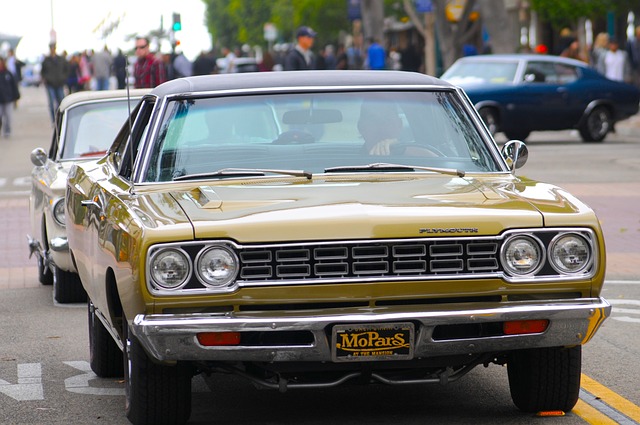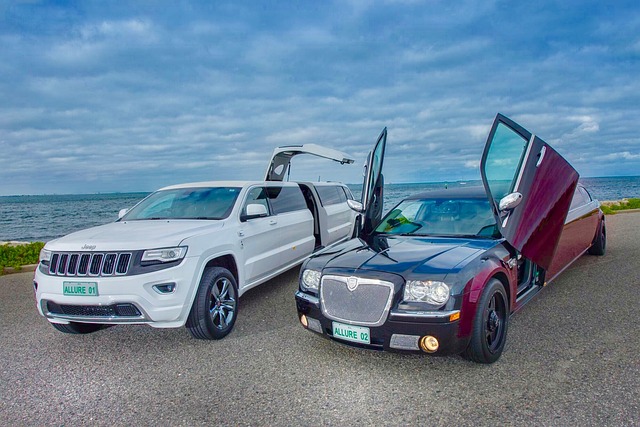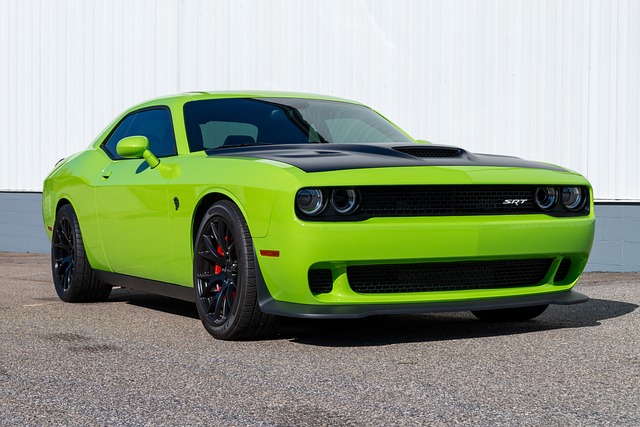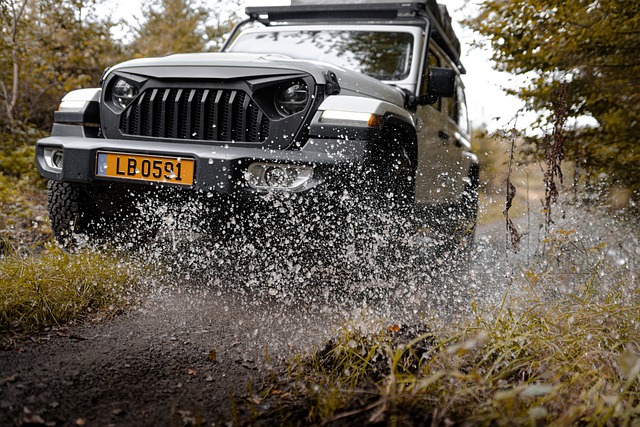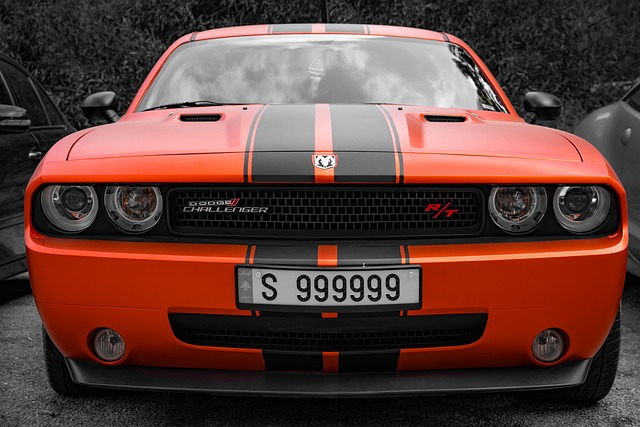Dodge Power Wagon
In early 1946, Dodge unveiled a new addition to their lineup: “the truck that needs no roads.”The truck in issue was the 1946-1968 Dodge Power Wagon, type WDX, a new multipurpose vehicle based on Dodge’s expertise manufacturing four-wheel-drive vehicles for American and allied military troops during WWII.
It was one of just two factory-complete general-use 4x4s available in the USA at the time, alongside the Willys Jeep, making it a pioneer in introducing four-wheel drive to a wider public.
No doubt, Dodge officials in the 1940s could not have predicted the massive demand for personal-use four-wheel-drive vehicles that exists today. When the Power Wagon was first presented in January 1946, the division defined it as a one-ton general-purpose vehicle intended for off-highway use on unimproved roads.
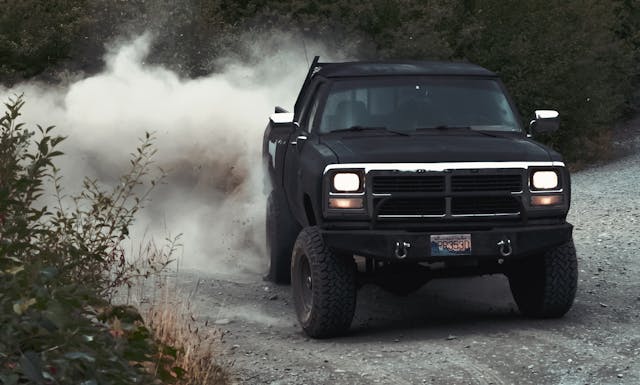
It’s reasonable to suppose that they couldn’t have predicted the Power Wagon’s longevity. Despite its “war surplus” appearance and L-head powerplants, it remained on the domestic market until 1968, after which it was exported for another decade under a US government program.
When the Power Wagon debuted, four-wheel-drive vehicles were not a novel concept. They’d been around since World War I. However, they were heavy-duty vehicles intended only for commercial or military purposes. Beginning in the 1930s, owners of light trucks could have modifications to four-wheel drive made by companies such as Marmon-Herrington, although these special-order vehicles were often purchased by enterprises or agencies with extremely particular requirements. “Average Joes” had limited exposure to 4x4s until they became “G.I. Joes.”
1945 Dodge Test Truck
Many soldiers who served in or fought with four- and six-wheel-drive vehicles during World War II were pleased with the capacity of multiaxle drive. Willys’ ¼-ton scout automobile became a battlefield legend, inspiring the firm to launch the Jeep CJ in the postwar civilian market.
Dodge, on the other hand, had a military vehicle that it believed could also be used in everyday life. In fact, the cover of the original Power Wagon sales brochure advertised it as “the Army truck the boys wrote home about… now redesigned for peacetime use.”
Still, the Power Wagon’s martial origins were deep. In 1934, Dodge manufactured a ½-ton transport truck for the Army, marking its first foray into four-wheel-drive military vehicles. It possessed the world’s first drive system that could be easily switched into and out of four-wheel mode by using a control lever in the cab.
1948 Dodge Power Wagon
In 1940, Dodge completed an Army contract to develop and produce ½-ton 4×4 military vehicles in several forms, using commercial truck components. The T202 series came with virtually standard front-end sheetmetal, giving them a “civilian” look. Similarly, its 116-inch wheelbase and 201-cubic-inch 79-horsepower six-cylinder engine matched those found in Dodge ½-ton trucks then traveling American highways. The military vehicles came with a four-speed gearbox, which is available on general-market trucks.
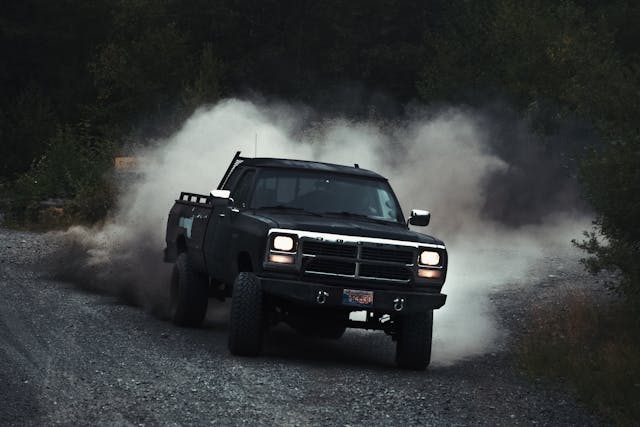
The T202 was replaced the next year by trucks from the T207 series. The ½-tonners had a military-specific bonnet, grille, and fenders. The trucks were powered by a 218-cubic-inch six with 85 horsepower from Dodge’s ¾- and one-ton commercial models. However, some T211s and all T215s (mechanical modifications of the T207) adopted a 92-horsepower 230-cubic-inch L-head six.
For additional information on the 1946 Dodge Power Wagon, check the following page.
For additional information about vehicles, see:
- Classic & Muscle Cars
- Sports Cars
- Consumer Guide: New Car Search
- Consumer Guide: Used Car Search
1946 Dodge Power Wagon
The 1946 Dodge Power Wagon model lineup includes a pickup, a chassis cab, a chassis with a windshield cowl, and a chassis with a flat-face cowl. (The cowl-and-windshield design was abandoned later on.) The pickup box had a considerable size. It was 96.06 inches long, 54 inches broad, and 22.25 inches tall, with a capacity of 58 cubic feet. The floor was built of hardwood and reinforced with steel skid strips. External compartments held 234 stakes to assist restrain higher loads.
The spare tire was located on the right side of the cargo box, forward of the rear fender. The chassis-cab and chassis-cowl jobs enabled owners to install custom aftermarket bodywork. Many were outfitted with nine-foot stake platforms, but the Power Wagon chassis also supported tow vehicles, firefighting equipment, “woody” station wagons, and even school buses.
The first paint colors were Seawolf Submarine Green (the normal color), Red, Dark Blue, and Dark Green. The base paint scheme was to paint the fenders, running boards, and bumpers black regardless of cab color, however the cab color may be extended to these components at an additional expense. Over the years, Power Wagons were available in every normal Dodge pickup color.
Early on, Dodge advertised the Power Wagon as having a cab large enough for three persons. However, the taxi was later billed as a two-man cab, most likely in acknowledgment of the virtual forest of levers in the center of the floor. A luxury cab option included vent-wing windows in the doors, a dome light, an armrest on the left door, and twin inside sun visors.
The Power Wagon’s large grille, enormous bumper, running boards, rear fenders, and huge load box gave it an aggressive, no-frills look. The winch and knobby military-style tires exuded power. The impression was not far from reality.
The sturdy 230-cubic-inch engine has a 3.25-inch bore and 4.63-inch stroke. With a 6.7:1 compression ratio, it produced 94 horsepower at 3,200 rpm and 185 pound-feet of torque at 1,200 rpm. The four-speed gearbox used extra-durable carburized gears.
A two-speed transfer case was an improvement above the wartime standard. It was located right behind the gearbox and had two speeds: 1:1 in high and 1.96:1 in low. With the transfer case in low range, the gearbox in first gear, and a 5.83:1 final-drive gear installed, the total ratio was 73.12:1. When the front-wheel-drive mode was switched off, only the direct ratio could be employed.
What should we name this unusual new product? Some early Dodge Engineering papers referred to it as the “Farm Utility.” Eventually, however, it was agreed to name it the Power Wagon. The phrase has significance in the trucking industry. Originally, it merely distinguished between a horse-drawn wagon and one powered by steam, electricity, or gasoline. Power Wagon was also the name of a pioneering truck magazine that ran for over 50 years, until 1946.
The debut of the 1946 Dodge Power Wagon is detailed on the next page.
For additional information about vehicles, see:
- Classic & Muscle Cars
- Sports Cars
- Consumer Guide: New Car Search
- Consumer Guide: Used Car Search
Introduction of the 1946 Dodge Power Wagon
The Dodge Power Wagon of the 1940s and 1950s certainly carried its weight. In terms of hauling capacity, Power Wagons were true brutes. They were designed for GVW ratings of 7,600 or 8,700 pounds. The latter was accomplished by installing extra-cost 1,600-pound-capacity front and 3,000-pound-capacity rear springs and wider tires. The standard size for eight-ply tires was 7.50×16, with 9.00×16 available.
Dodge management and dealers were focused on providing consumers suggestions for how to utilize their Power Wagons. (The 1946 sales manual identified 75 different sorts of organizations, ranging from airports to well drillers, that might use the vehicle.) For example, a two-man pole-setting team from the New York State Telephone Company was covered in an edition of Job-Rater magazine that was distributed to all Dodge vehicle owners four times a year.
1948 Dodge Power Wagon Posthole Digger
Their specially built Power Wagon had a truck engine-powered boom and winch, as well as an auger powered by a six-horsepower auxiliary engine. With this configuration, the guys were able to drill a posthole 12 inches in diameter and 5.5 feet deep in a matter of minutes.
Dodge’s marketing team devised a clever strategy to raise awareness of the Power Wagon’s capabilities. Wheels Across South America was a color and sound video produced by adventurer Armand Denis for free showings sponsored by 4,000 Dodge dealers.
Denis’ 1949 expedition used three Dodges to go across unknown, trackless jungles: a four-door sedan, a one-ton panel truck, and the Power Wagon. All three vehicles were outfitted with radio phones for communication in the forest.
The Power Wagon stayed mostly unaltered for the 23 years it was on the market. However, this is not to mean that it has not been improved.
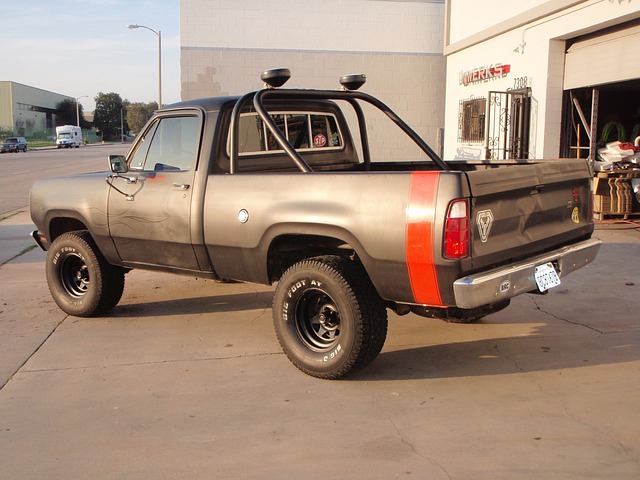
The only cosmetic change occurred in 1951, when the design of the pickup box was modified. The original box had smooth sheetmetal sides and four stake compartments. The revamp included three stake pockets, as well as ribbed sides for added strength and visual appeal. The new box was comparable in appearance to other Dodge trucks at the time, but its eight-foot length was unique to the Power Wagon.
That same year, the Power Wagon received the centrally placed instruments featured on Dodge’s B-series light trucks. The elements that comprised the luxury cab option were then adopted as standard equipment in 1961.
1952 Dodge Power Wagon Fire Engine
By 1957, the 230 engine had been upgraded to 113 horsepower thanks to a succession of horsepower improvements over the 1950s. Four years later, it was eventually replaced by another solid Dodge pickup six. It displaced 251 cubic inches with a 3.44-inch bore and 4.5-inch stroke. With a compression ratio of 7.1:1, gross horsepower was 125 at 3,600 rpm, while torque peaked at 216 pound-feet at 1,600 rpm. Despite being an L-head design, the 251 was not just a 230 with differing cylinder size. It had a completely different and longer block.
1952 Dodge Power Wagon Cab and Chassis
The maximum GVW was increased to 9,500 pounds in 1957. This was aided by the introduction of 9.00×16 10-ply tires, which later became the standard size. Beginning in late 1956, the four-speed gearbox was synchronized. 1957 saw the introduction of key starting.
During the 1950s, power steering and brakes were added to the option list, and 12-volt electrics replaced the previous six-volt system. The Power Wagon was included in the company’s changeover to the alternator in 1961, and lock-out front hubs were introduced in 1962.
Continue to the next page to learn more about the 1960s Dodge Power Wagon.
For additional information about vehicles, see:
- Classic & Muscle Cars
- Sports Cars Consumer Guide: New Car Search
The Dodge Power Wagon from the 1960s
In the 1960s, the Dodge Power Wagon remained competitive, although it was finally superseded by more worthy rivals. By 1968, the Power Wagon’s cab from 1939 was plainly out of date.
Still, if it had been feasible to test-drive a fully equipped new 1946 model versus a fully equipped new 1968, the contrasts would have been stark. The 251-cubic-inch engine delivered greater power, making the vehicle seem lighter and faster. The bigger engine, paired with power steering, brakes, and a synchronized gearbox, would make you feel like you were driving a completely contemporary truck.
Dodge built 95,145 Power Wagons until 1968, when the base price for a pickup had almost quadrupled to $4,634. The biggest year was 1957, with 8,706 manufactured, although previous years ranged from 1,400 to 6,000.
1950 Dodge Power Wagon school bus.
Beginning in 1960, assembly for overseas markets dominated Power Wagon production. (In addition to the Dodge trucks, Fargo-badged Power Wagons were produced for sale in Canada and certain export regions.) This process quickened in 1962 when Power Wagons were included in the Military Defense Assistance Program, which allowed the United States to provide or sell military equipment to friendly foreign countries. Having gone full circle in some ways, the trucks were produced for this program until the end of serial manufacturing in 1978.
While the Power Wagon seemed to be frozen in time, the four-wheel-drive market was far from static. In mid-1947, Willys introduced one-ton 4×4 vehicles. With Jeep-inspired design, they were priced similarly to the Power Wagon, albeit the Willys trucks had less load space and a four-cylinder engine. By the conclusion of the civilian Power Wagon’s life, four-wheel-drive variants were available from any American manufacturer of light-duty vehicles, and the sport-utility vehicle industry was also growing.
Dodge Ram 2500 & Dodge Power Wagon
The Dodge Power Wagon’s battle-hardened reputation, however, remained as consistent as its look. When the division started producing four-wheel-drive versions of its more current conventional trucks in the late 1950s, it used Power Wagon insignia on them until 1980.
In 1999, Dodge unveiled a Power Wagon concept vehicle that paid tribute to the original from 1940. Finally, since 2005, the term has been used for an off-road option package for Dodge Ram 2500 pickup trucks, which includes a front-mounted winch. It seems that the Power Wagon is an ancient soldier who refuses to die.
For additional information about vehicles, see:
- Classic & Muscle Cars
- Sports Cars
- Consumer Guide: New Car Search
- Consumer Guide: Used Car Search

